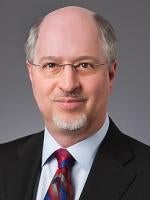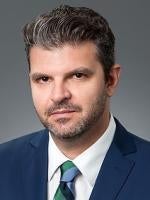What is Quality Anyways?: James Hinton, the CEO of Baylor Scott and White, got a good laugh from the audience when he said that he was proud to be one of the five or six hundred hospitals in the nation’s top 100 hospitals. And looking at the multiple “ego wall” slides we saw in day one and day two of the conference, all of which systems or companies were recognized for their outstanding quality and achievements, it brings to mind the old Lake Woebegon comment by Garrison Keillor that their town is a place where all of the children are above average. As some/many may ask, if everyone is doing so well per the awards, then how is it that we as a nation are not doing well with our health and our healthcare system? Is it just “those other guys” who are not winning those awards that are so far below average and dragging us all down in quality and exceeding in costs? Perhaps there is a place for some new thinking on measuring quality based on meeting patient goals, rather than third-party quality organization goals. Put another way, healthcare today still is focusing more on process than results. Did you get your mammogram is the question, rather than did you make it another year without succumbing to a major disease.
Most patients want to be “healthy” – i.e., to be able to conduct their daily activities and live their lives, even though that may well be living with a well-managed chronic condition (or two or four of those). And patient expectations – the real consumer of healthcare – really don’t effectively factor into today’s quality scoring, other than through “soft” measures like net promoter scores (“NPS”) and other experience-based approaches.
In part, this is because there is real confusion in the market between transactional and partnering experiences. When you say I want a coffee and think of Starbucks, you are imagining a cup of coffee with a certain taste, quality and price point, along with an expected customer experience of how you will order, receive and pay for the coffee. That is really the essence of a trademark or brand – an expectation shared between the consumer and the vendor that is confirmed through the transaction. But at the end of the day, buying that cup of coffee is transactional, as you are not likely going to interact with Starbucks throughout the rest of your day, nor consult with them as to major life decisions, nor invite them into your home or your family decision making processes. We in healthcare need to make that transaction convenient, effective, pleasant and value-priced – but we also need to clear out the confusion between transactional and partnering experiences. Episodic care by its nature is transactional – a cold or flu, a broken bone, even labor, and delivery. And episodic care, frankly, is not that expensive to our healthcare system overall. It’s the chronic conditions where we have much more cost, but also much more optionality.
As our health status changes though and we need more in order to be able to continue to live our lives as we want to, then we are looking for a partnering experience, rather than a transactional experience. That of the trusted advisor (cue Dr. Welby or your television doctor of choice), the financial advisor that can help you plan for the impact of your changed health status and the insightful guide that can help you avoid the novice mistakes that new users of the healthcare system make all the time. And our healthcare system today not only does not provide those functions in an accessible, economic manner, it also doesn’t even get graded on that. We are seeing a lot of healthcare entities starting to focus on precision medicine – artificial intelligence suggesting which oncology drug works best for your specific genetic condition and cancer – but that essentially is a transactional function. And the market really wants a partnering function – yes, I know you have (fill in the blank disease) but here’s how we’re going to get you through it, help you adjust to living with it and make sure it doesn’t bankrupt you financially. Some food for thought – maybe we should be putting as much effort into communication and navigation as we are into treatment modalities and alternatives. And we need to have someone pay appropriately for that communication and navigation service, because at the end of the day, in life, you get what you pay for.
The New Front Door – Along those lines, Larry Merlo of CVS characterized in his presentation yesterday the CVS/Aetna combined entity as providing a “new front door” to healthcare. And he sees that new front door as key to transforming the consumer experience in healthcare and focusing on consumers. CVS’ three guiding principles were: (1) Be Local – using the large number of CVS stores through which 1 of 3 Americans engage with CVS; (2) Make it Simple – work to explain and guide consumers, in part by using trusted pharmacists to interact with consumers; and (3) Improve Health, with strategies aimed enterprise-wide to improve quality and reduce cost through common chronic disease management, readmission prevention, site of care management, optimizing primary care and complex chronic disease management (oncology, cardiovascular and kidney disease). One of the newest ideas announced by CVS was its “concept stores” that will be organized in a “hub and spoke” approach with existing CVS stores. The concept stores will allocate up to 20% of their space to healthcare offerings (including pharmacy, wellness center, and retail clinic) through scaling back on underperforming categories/products or reducing the number of products offered in a category in that concept store. Clinical services are intended to include post-discharge follow up, additional screening, nutritional counseling, and chronic condition management. Merlo saw a need for an expanded scope of MinuteClinic services to help with early identification and management of chronic disease. Drawing on the earlier thoughts above, CVS clearly wants to be the consumers’ partner in their health relationships and to help consumers navigate the healthcare system.
More on Oncology – Oncology continued to be a focus area yesterday, as cancer remains the nation’s #2 killer. The American Cancer Society predicts 600,000 cancer deaths this year and more than 1.7 million new cancer cases. Concerto Health AI, one of the many projects funded by Ramesh Wadhwani with a focus on oncology, wants to help bring cancer death rates down by 25% in the next 15 years. The press this week generally reported on the downward trend of cancer deaths for the past 25 years, which fell 27 percent between 1991 and 2016 due in large part to decreased smoking and lung cancer cases. But of the common types of cancers that are increasing rather than declining, all of them are linked to obesity, including liver, pancreas and uterine cancer. On the pharma side, Roche meanwhile is looking to replace over $10 billion in revenue it will lose in the next few years to the biosimilar competition and its pipeline is brimming with new oncology and ophthalmology medications. As a note, two of the most active private equity investment sectors in healthcare services these days are oncology and ophthalmology. Roche also emphasized its acquisition of Flatiron, a leading provider of oncology EMR services (and incidentally a major source of oncology patient data) in helping match patients with therapies and bring down the cost and time for clinical trials by replacing control arms of their studies with real-world data collected by Flatiron.
Revenue Cycle Management – Again – In addition to the revenue cycle management news of yesterday that we reported in our blog post, “Day 1 Notes from the 2019 JPMorgan Healthcare Conference,” Tenet reported that its Conifer revenue cycle management subsidiary was doing well. Conifer experienced an $80 million EBITDA growth, which as a 33% growth over the prior year. Conifer is still in its sale process, as Tenet continues to evaluate its options, including a possible spin out to shareholders. Technology-enabled revenue cycle management continues to be an interesting opportunity.
Day 1 Notes from the 2019 JPMorgan Healthcare Conference and Day 3.




 />i
/>i
